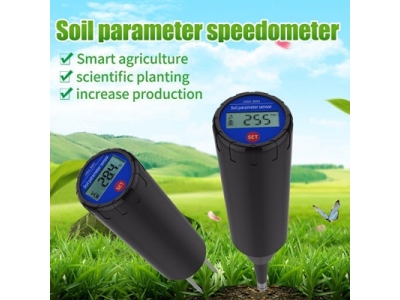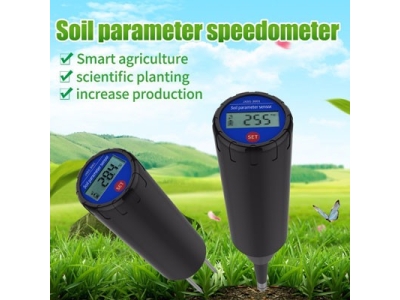Soil plays a crucial role in supporting plant growth and ecosystem sustainability. The pH of soil, which measures its acidity or alkalinity, is a vital parameter that affects various soil properties and nutrient availability. Monitoring soil pH is essential for effective land management, agricultural practices, and environmental conservation. Soil pH sensors are instrumental in assessing and maintaining soil health, and this article explores their role in land monitoring, their working principles, applications, and future prospects.
Working Principles of Soil pH Sensors

Soil pH sensors utilize various techniques to measure the pH level of soil accurately. The two common methods used are electrochemical and optical detection.
Electrochemical sensors consist of an electrode that comes into contact with the soil. When the electrode interacts with the soil, a potential difference is generated due to the ions present in the soil solution. This potential difference is then converted into a pH value by the sensor.
Optical sensors, on the other hand, use indicators that undergo color changes in response to changes in pH. These indicators are coated onto a surface, and when they come into contact with the soil, they react with the soil solution, resulting in a color change. The intensity of the color change is then measured by the sensor and correlated to the pH value.
Applications of Soil pH Sensors
Soil pH sensors have diverse applications across various sectors, including agriculture, environmental monitoring, and land management. Some of the key applications include:
1. Agriculture: Soil pH is a critical factor in determining the availability of essential nutrients for plant growth. Soil pH sensors help farmers assess the pH levels of their soil and make informed decisions about soil amendments, such as lime application, to correct pH imbalances. This ensures optimal nutrient uptake by plants, leading to improved crop yields and quality.
2. Environmental Monitoring: Monitoring soil pH is essential for assessing soil health and understanding its impact on the overall ecosystem. Soil pH sensors help in identifying soil acidification, which can lead to nutrient imbalances, soil degradation, and reduced biodiversity. By monitoring soil pH, land managers and environmentalists can implement suitable strategies for soil conservation and restoration.
3. Land Management: Soil pH sensors play a vital role in land management practices, such as soil remediation and reclamation projects. By monitoring pH levels, land managers can identify areas with high acidity or alkalinity and take appropriate measures to restore the soil to a suitable pH range. This ensures the successful establishment of vegetation and sustainable land use.
4. Research and Education: Soil pH sensors are valuable tools in scientific research and educational settings. They enable researchers and students to study the effects of different factors, such as land use practices, climate change, and soil amendments, on soil pH. This knowledge contributes to a better understanding of soil dynamics and facilitates the development of sustainable land management practices.
Future Prospects
The field of soil pH sensors continues to evolve, and there are several exciting prospects for the future. Some of the areas of development include:
1. Wireless and IoT Integration: Researchers are working on developing wireless soil pH sensors that can transmit data in real-time. Integrating these sensors with IoT technology would enable remote monitoring and data analysis, providing valuable insights for land management and precision agriculture.
2. Multi-Parameter Sensors: Currently, soil pH sensors focus solely on measuring pH levels. However, there is a growing demand for sensors that can measure multiple parameters simultaneously, such as soil moisture, temperature, and nutrient levels. Development in this area would provide a comprehensive picture of soil health and facilitate more informed land management decisions.
3. Advances in Sensor Materials: Research is underway to develop sensor materials that improve accuracy, sensitivity, and durability. These advancements would enhance the performance of soil pH sensors, ensuring more reliable and long-lasting monitoring capabilities.
Conclusion
Soil pH sensors play a vital role in land monitoring, agricultural practices, and environmental conservation. They facilitate the assessment and maintenance of soil health, enabling farmers, land managers, and researchers to make informed decisions about land use and soil management. As technology advances, wireless integration, multi-parameter sensing, and improvements in sensor materials hold promising prospects for the future of soil pH monitoring. Continuous innovation in this field is essential for sustainable land management and ensuring the productivity and health of our ecosystems.






